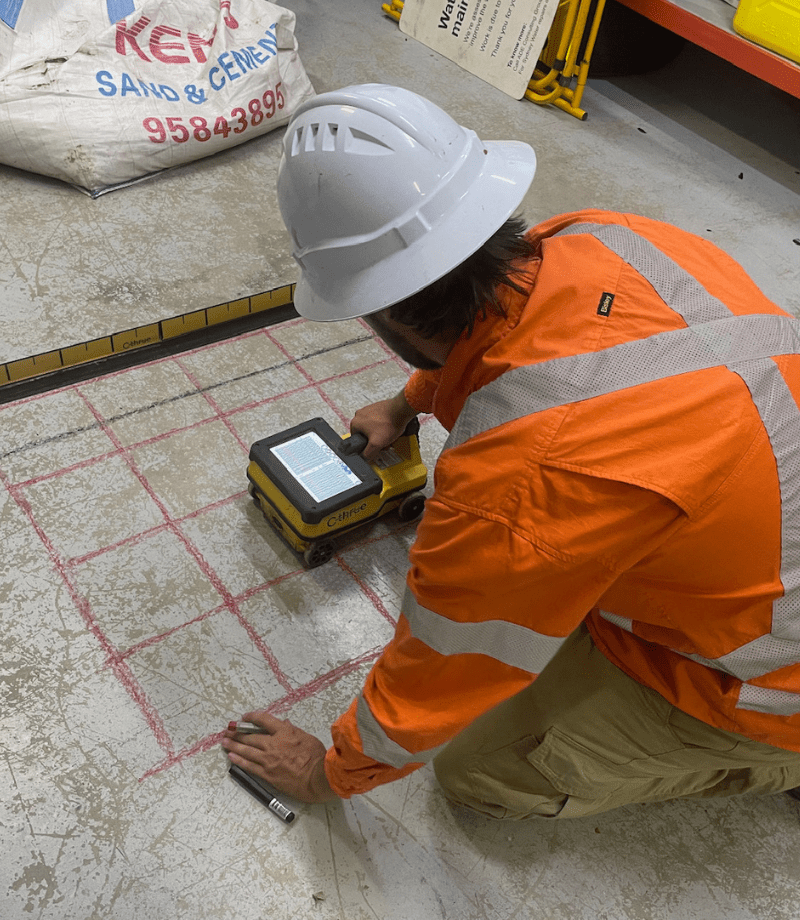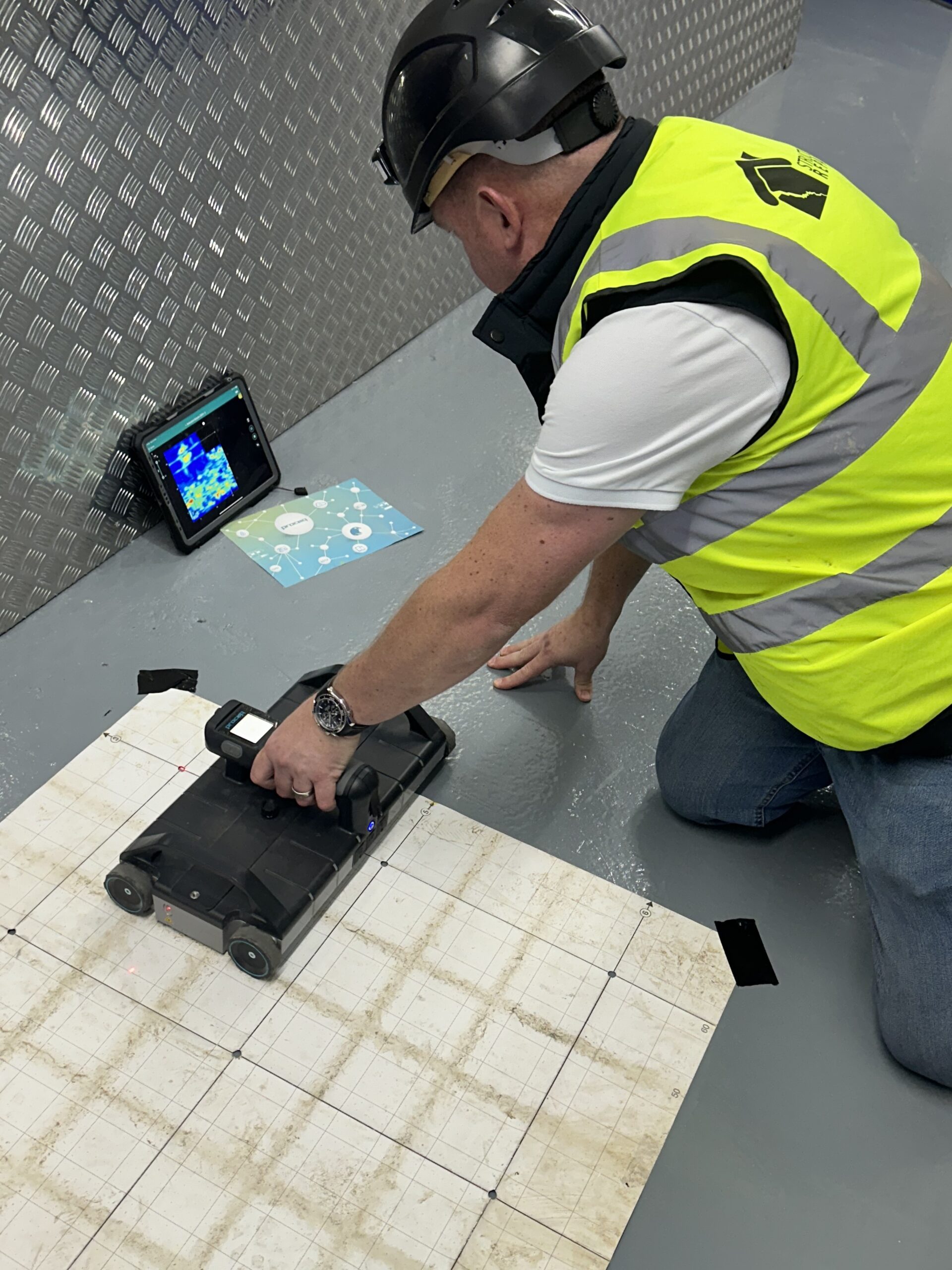Trick Benefits of Utilizing Concrete Scanning Innovation
Trick Benefits of Utilizing Concrete Scanning Innovation
Blog Article
Elevate Your Building Process With the Strategic Insights of Concrete Scanning for Improved Productivity
One such technology that has actually revolutionized the building industry is concrete scanning. By utilizing the strategic understandings offered by concrete scanning, building experts can open a world of enhanced productivity and structured procedures.

Advantages of Concrete Scanning
Enhancing job performance and safety, concrete scanning provides a non-destructive approach for finding concealed items within concrete structures. By making use of technologies such as ground-penetrating radar (GPR) and concrete x-ray imaging, building groups can accurately locate rebar, post-tension cables, electric channels, and various other obstructions before exploration, reducing, or coring right into concrete.
The advantages of concrete scanning are various. Building sites can be intricate settings, and understanding what exists beneath the surface can avoid accidents and injuries.
Moreover, concrete scanning advertises total project effectiveness by enhancing workflows and stopping rework. By determining prospective issues beforehand, groups can readjust their plans proactively, saving time and resources in the future. Fundamentally, the adoption of concrete scanning innovations is a calculated financial investment that pays rewards in terms of safety, efficiency, and cost-effectiveness.
Innovation Assimilation for Performance
Concrete scanning's ability to streamline operations and enhance job effectiveness can be additional enhanced with tactical combination of advanced innovations. By incorporating Structure Info Modeling (BIM) software application into concrete scanning procedures, building and construction teams can accomplish a higher degree of accuracy and coordination. BIM enables for the creation of 3D versions that offer thorough understandings right into the project, allowing much better decision-making and minimizing the possibility of errors. In addition, the assimilation of Increased Truth (AR) technology with concrete scanning can boost on-site visualization, enabling task managers and employees to overlay digital details onto the physical setting in genuine time. This can facilitate extra accurate positioning of aspects and improve interaction among staff member. Moreover, making use of drones for airborne surveys along with concrete scanning can quicken data collection and evaluation, allowing faster decision-making and progression tracking. In general, the critical combination of these technologies can significantly improve performance and performance in building and construction projects.
Avoiding Costly Errors
How can meticulous focus to information during concrete scanning procedures aid building teams in stopping expensive mistakes? Concrete scanning plays an important function in determining prospective concerns prior to they intensify into costly blunders. By making use of innovative scanning modern technologies such as Ground Passing Through Radar (GPR) and electro-magnetic induction, construction teams can properly identify rebar, utilities, voids, and various other blockages within concrete frameworks. This level of precision enables project supervisors to make enlightened choices pertaining to the design and style of their construction plans, reducing the threat of unexpected damage to vital facilities during the structure process. Additionally, concrete scanning helps in ensuring architectural stability by recognizing weak points or flaws in the concrete early, enabling timely repair work and adjustments. By proactively dealing with these issues, building groups can avoid costly mistakes such as rework, delays, or safety dangers that may emerge from ignored discrepancies in the concrete framework. Ultimately, buying complete concrete scanning procedures verifies to be an economical strategy in the future, saving both time and resources while boosting overall task efficiency and high quality.
Enhancing Job Management
Thorough attention to detail throughout concrete scanning processes not only aids in staying clear of costly errors but likewise lays a solid foundation for reliable job administration in building and construction ventures. By incorporating concrete scanning technology read this article into project administration strategies, construction teams can streamline process, improve communication, and ensure that jobs remain on track.
Concrete scanning supplies beneficial insights right into the architectural stability of existing components, enabling job managers to make informed choices pertaining to layout alterations or building sequences. This proactive strategy minimizes the risk of unanticipated delays or remodel, eventually conserving time and sources. Additionally, the information acquired from concrete scanning can be incorporated into Building Details Modeling (BIM) systems, allowing real-time cooperation and control amongst various stakeholders.
Moreover, concrete scanning aids job managers recognize prospective dangers or obstacles prior to they rise into larger concerns, advertising a safer workplace for all entailed. With improved visibility and accuracy offered by concrete scanning innovation, project managers can successfully intend, check, and execute construction projects with higher effectiveness and self-confidence.
Optimizing Productivity
One key aspect of making best use of efficiency is through the adoption of concrete scanning technology. By Visit This Link using ground-penetrating radar (GPR) and other scanning techniques, building and construction groups can properly situate rebar, avenues, and various other subsurface elements, decreasing the threat of pricey errors and hold-ups during excavation and drilling.
Furthermore, embracing Structure Details Modeling (BIM) software application can dramatically boost performance by developing in-depth 3D designs that enhance project visualization and control amongst different trades. BIM permits better clash detection, allowing issues to be identified and solved prior to building also begins, saving time and resources in the future.
Carrying out a lean building strategy, which concentrates on removing waste and maximizing performance across all job stages, is an additional reliable technique for maximizing performance. By promoting collaboration, interaction, and continual enhancement, construction groups can function a lot more cohesively towards achieving task goals in a streamlined and efficient fashion.
Verdict
Finally, the critical application of concrete scanning in the building process offers many advantages, including boosted performance, expense financial savings, boosted job management, and improved productivity. By incorporating this Discover More innovation, building and construction groups can avoid expensive errors, streamline their procedures, and optimize their total job output. Concrete scanning is a beneficial device that can raise the building and construction procedure and cause even more effective and lucrative outcomes.

Report this page